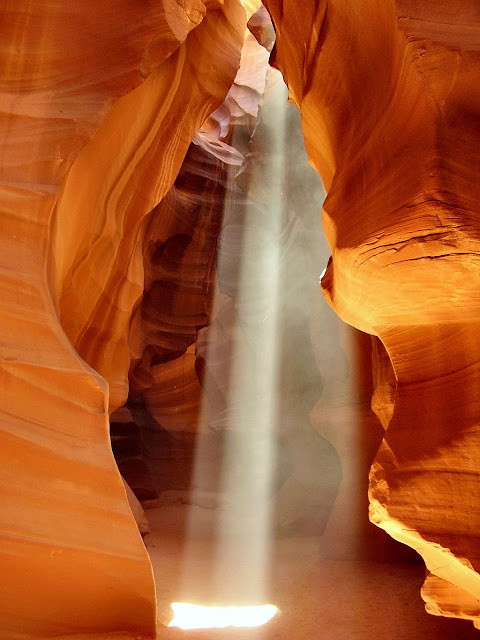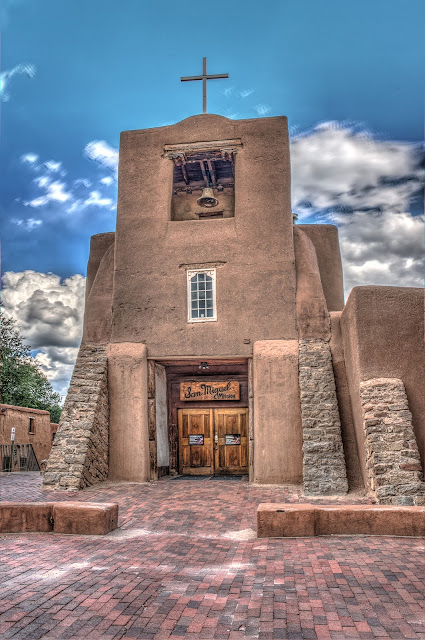Day 31 (D-30) Arches National Park
Day 31 (D-30) Arches (not Archie!)...and a little grammar
Visitors in 2018 -->1,663,557
Visitors in 2018 -->1,663,557
Arches National Park preserves over 2,000 natural sandstone arches, like the world-famous Delicate Arch, as well as many other unusual rock formations. The park contains the greatest density of natural arches in the world. Throughout the park, rock layers reveal millions of years of deposition, erosion and other geological events.
This is Delicate Arch and adjacent large panhole at sunset,
February 2011
SO BEAUTIFUL!
SUCH A BEAUTIFUL PLACE TO VISIT!
The park is 310 km2 in size. Its highest elevation is 5656 feet (1723 m) at Elephant Butte, and its lowest elevation is 4,085 ft (1245 m) at the Visitor Center.
In 2010, when I took a group there, I had read that since 1970, 43 arches had fallen because of erosion. But that statistic is no longer valid. Others have fallen since then, including Rainbow Arch which fell during the winter of 2018.
The area, administered by the National Park Service, was originally designated as a National Monument on April 12, 1929. It became a National Park on November 12, 1971.
The park is 310 km2 in size. Its highest elevation is 5656 feet (1723 m) at Elephant Butte, and its lowest elevation is 4,085 ft (1245 m) at the Visitor Center.
In 2010, when I took a group there, I had read that since 1970, 43 arches had fallen because of erosion. But that statistic is no longer valid. Others have fallen since then, including Rainbow Arch which fell during the winter of 2018.
Two photos of Rainbow Arch, BEFORE and AFTER
The fallen arch
The first reliable date within Arches is an interesting one. Denis Julien, a French-Canadian American fur-trapper of Huguenot origin with a habit of chiseling his name and the date onto rocks throughout the Southwest (Utah and Colorado), left an inscription in this area:
Denis Julien, June 9, 1844.
OK in 1844, but no chiseling today please!
And
YOU MUSTN'T / YOU CAN'T / YOU'RE NOT ALLOWED TO
climb on any named arch within the park.
IT IS FORBIDDEN.
More on Arches tomorrow.OK in 1844, but no chiseling today please!
And
YOU MUSTN'T / YOU CAN'T / YOU'RE NOT ALLOWED TO
climb on any named arch within the park.
IT IS FORBIDDEN.
My best,
Jane
Jane
________________________________________________
VOCABULARY:
--as well as = also
--panhole = a shallow (not deep) depression or basin eroded into flat or gently sloping rock
--so / such a = Do you remember how to use them correctly? https://www.grammarbank.com/so-such-such-a.html
--panhole = a shallow (not deep) depression or basin eroded into flat or gently sloping rock
--so / such a = Do you remember how to use them correctly? https://www.grammarbank.com/so-such-such-a.html
reliable = "fiable" (The stress is on the second syllable: re-LI-able.)
I enjoy electronically chiseling the posts of this blog into the rock of The Web. I wonder if they will still be here – in the cloud -- 175 years from now. I wonder if Denis Julien asked himself that same question 175 years ago....
GRAMMAR: Modals
All the auxiliary verbs except be, do and have are called modals. Unlike other auxiliary verbs, modals only exist in their helping form: they cannot act alone as the main verb in a sentence. The modal auxiliary verbs are always followed by the base form (infinitive form without "to").
MUSTN'T = "Must not" expresses prohibition - something that is not permitted, not allowed. We can use "must not" to talk about the present or the future, but we cannot use "must not" to talk about the past.
HERE, "can't" means the same as "mustn't". They both mean that "you are not allowed to climb on the arches"; "it is not permitted to climb on the arches"; "it is forbidden to climb on the arches."
All the auxiliary verbs except be, do and have are called modals. Unlike other auxiliary verbs, modals only exist in their helping form: they cannot act alone as the main verb in a sentence. The modal auxiliary verbs are always followed by the base form (infinitive form without "to").
MUSTN'T = "Must not" expresses prohibition - something that is not permitted, not allowed. We can use "must not" to talk about the present or the future, but we cannot use "must not" to talk about the past.
HERE, "can't" means the same as "mustn't". They both mean that "you are not allowed to climb on the arches"; "it is not permitted to climb on the arches"; "it is forbidden to climb on the arches."








Comments
Post a Comment